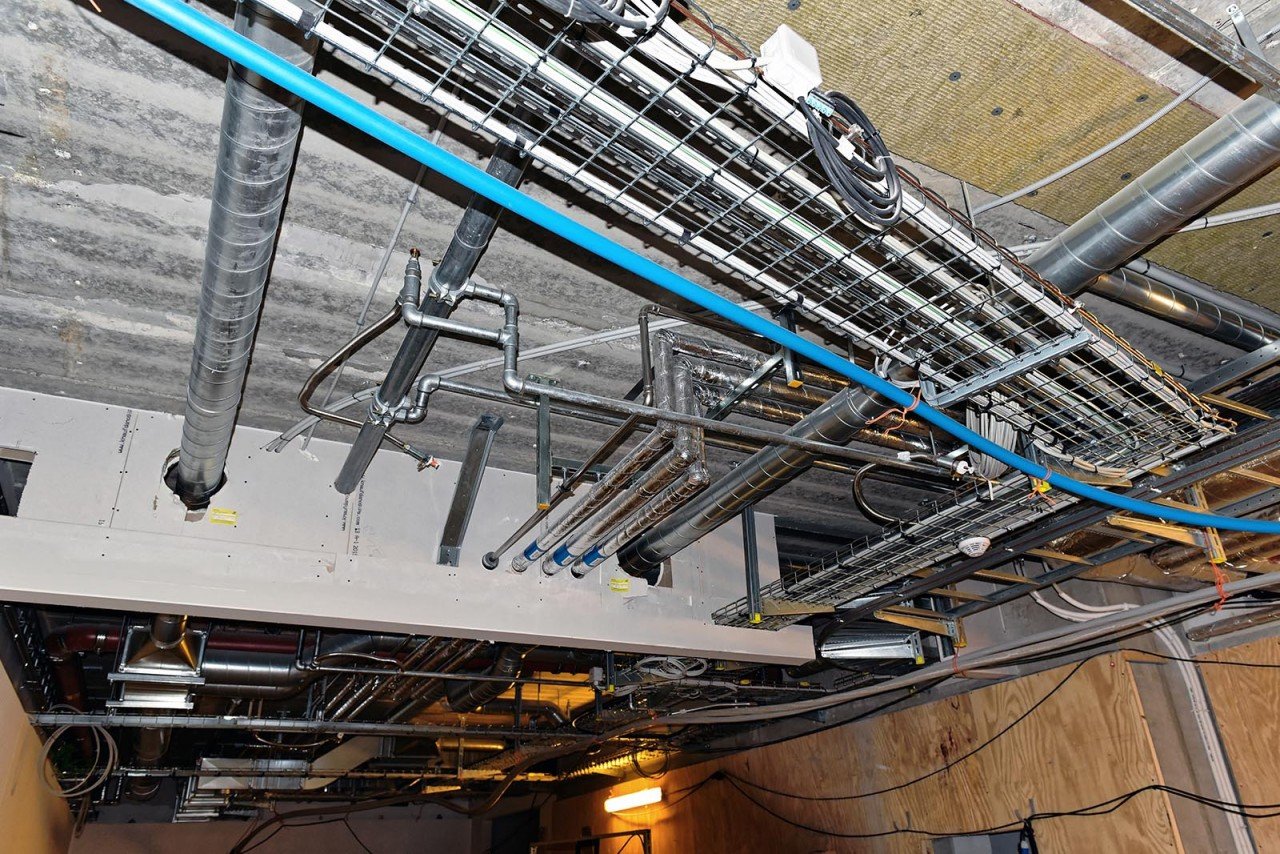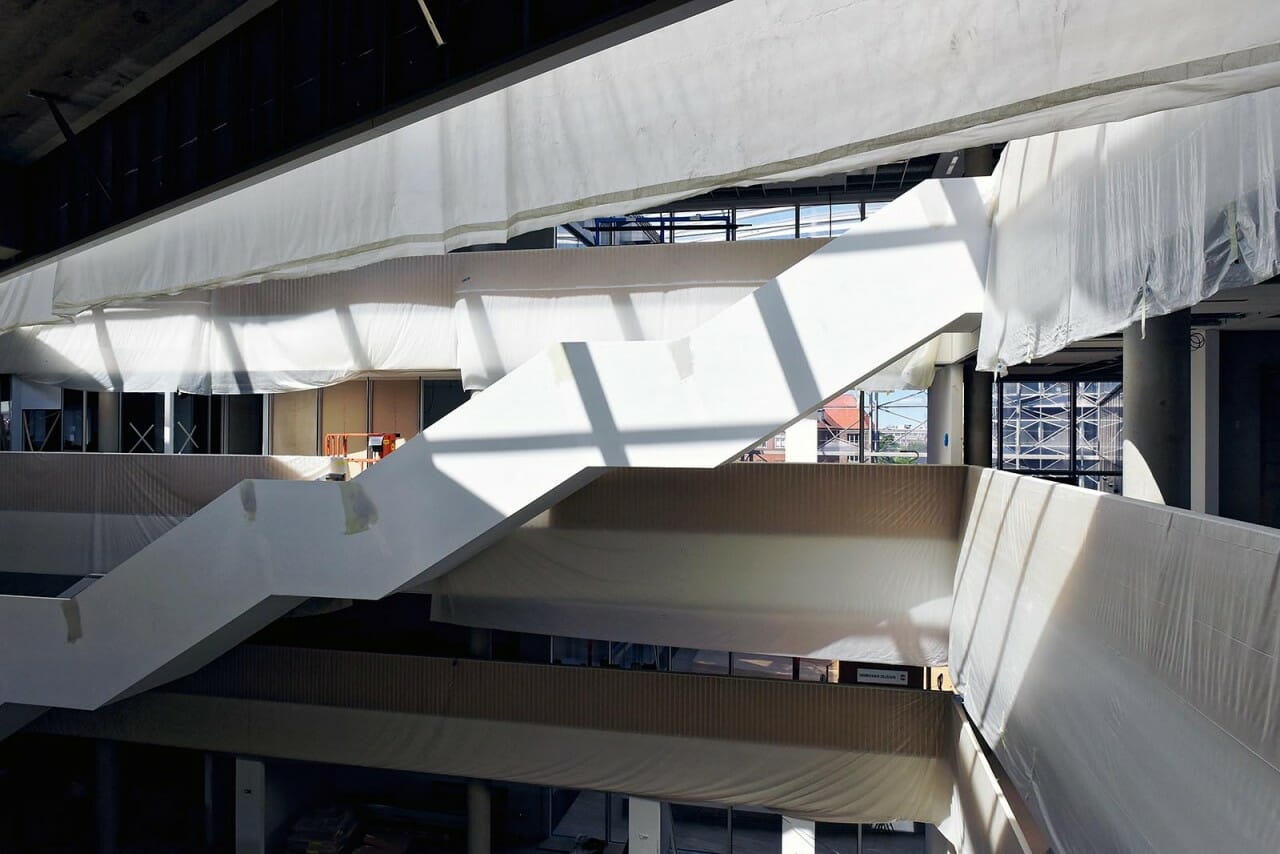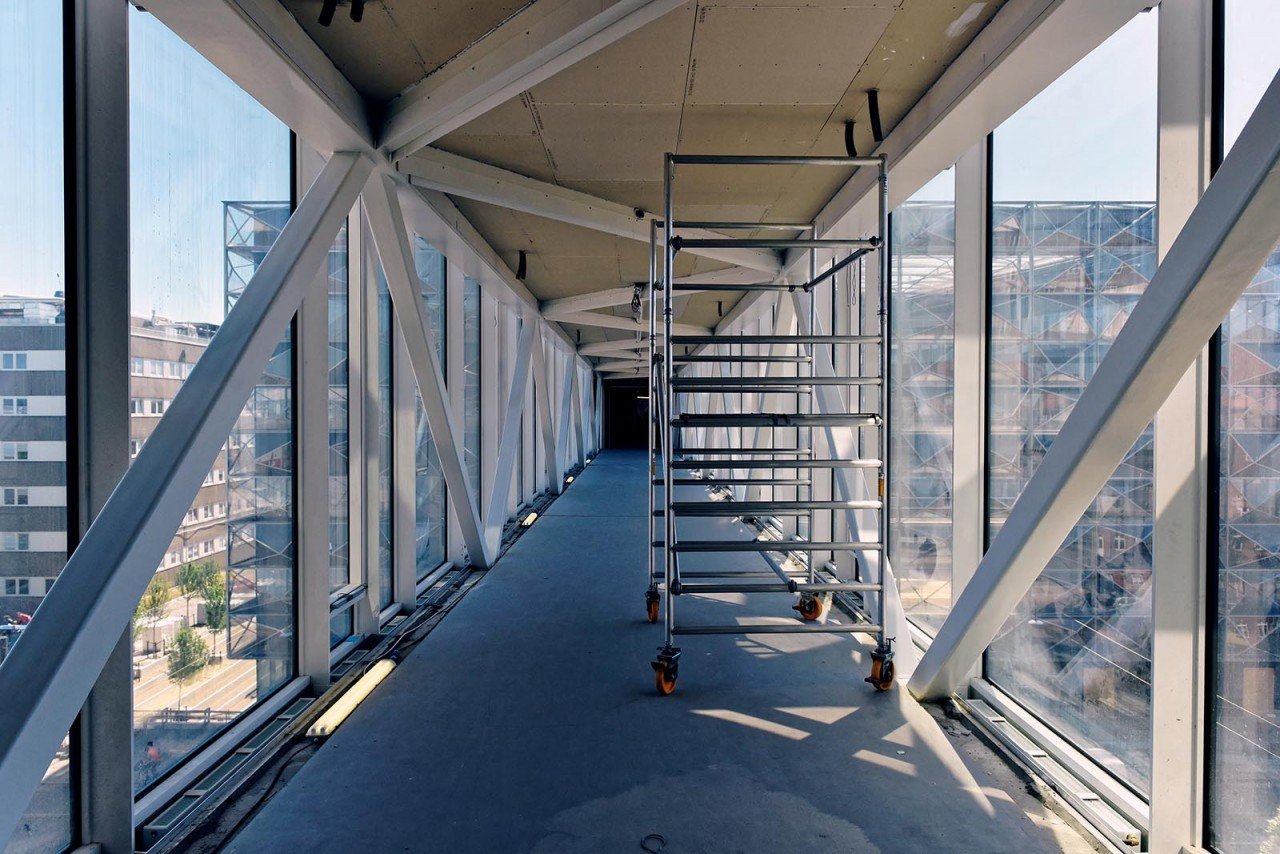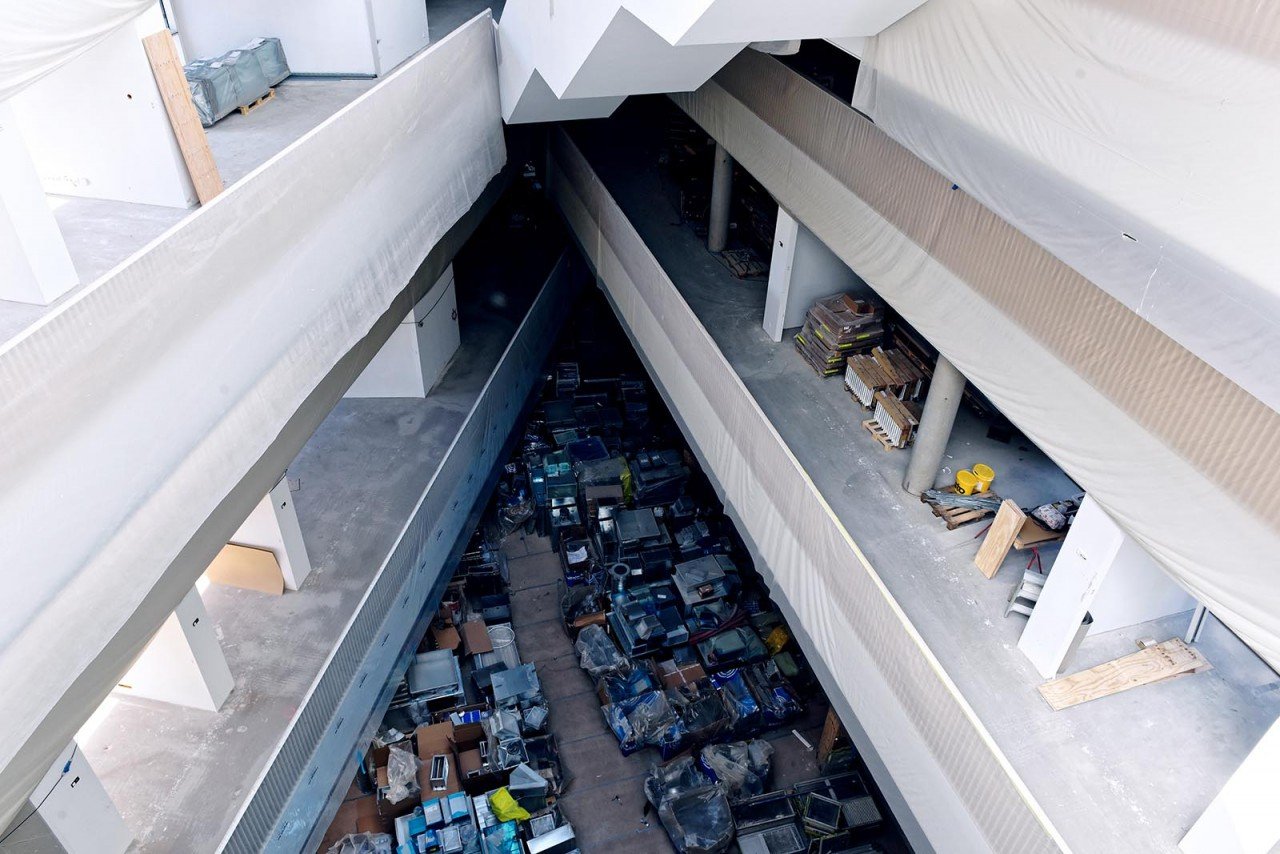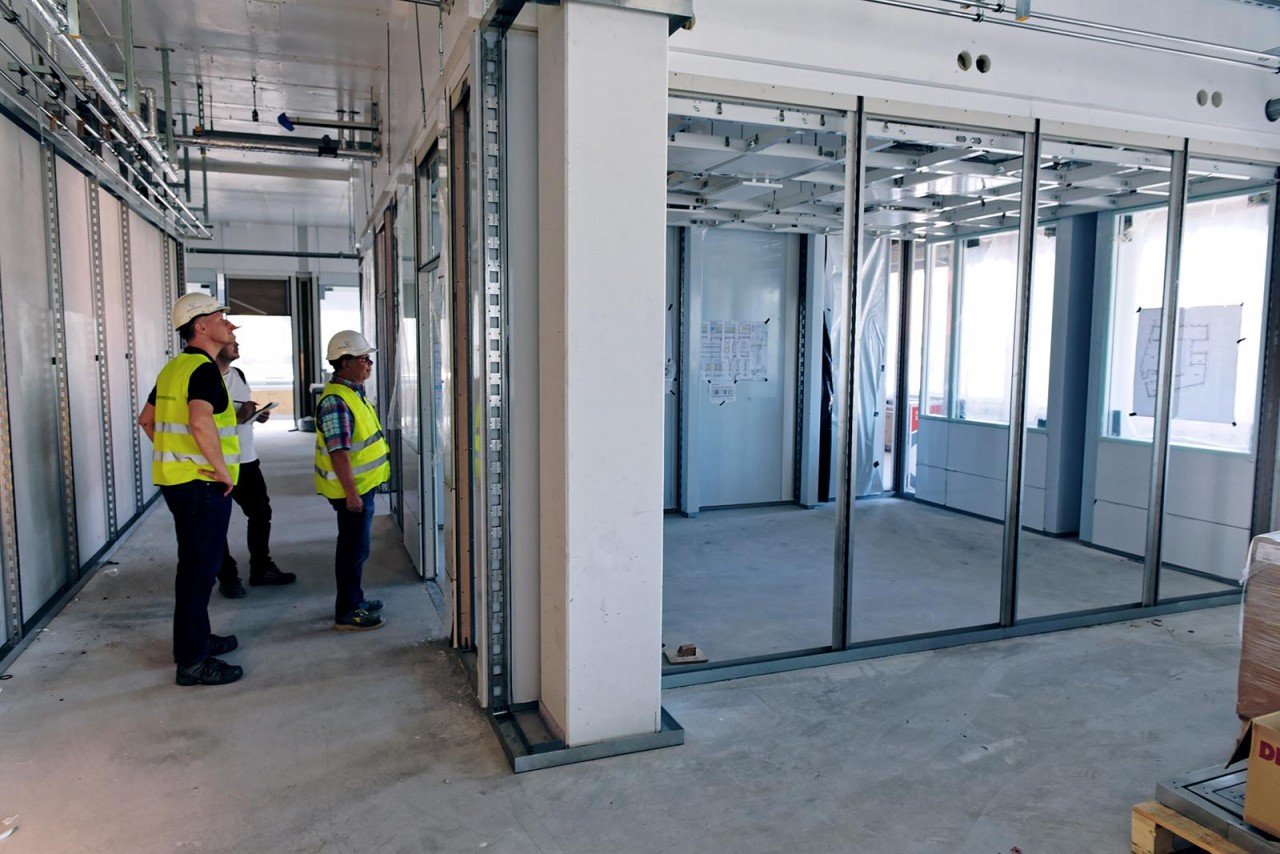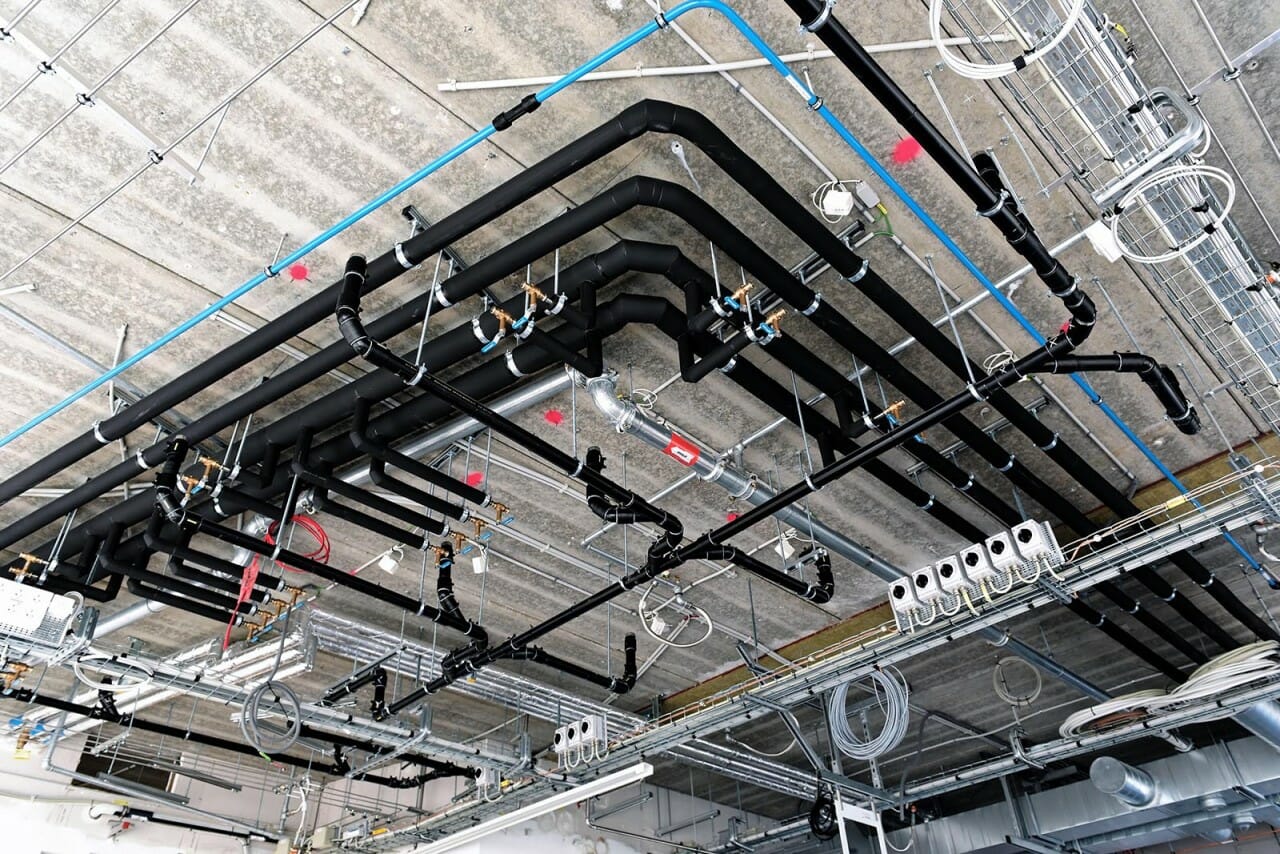Universitetsavisen
Nørregade 10
1165 København K
Tlf: 35 32 28 98 (mon-thurs)
E-mail: uni-avis@adm.ku.dk
—
Campus
Byggeri — The completion of the scandalised Niels Bohr complex on Jagtvej is a high priority for the project’s owner. Project Manager Jørn-Orla Bornhardt says that he - just like UCPH - wants researchers to bring home Nobel prizes in the laboratories that he is building.
“I came to this after the Niels Bohr Building should have been finished,” says Jørn-Orla Bornhardt. He is engineer and project manager for the more than 300 people who are currently completing the construction of the Niels Bohr Building at the University of Copenhagen.
He serves coffee in plastic cups on the top floor of the complex of grouped porta cabins that are the offices and facilities for the hundreds of people who work at the Niels Bohr Building. We are in the first part of the month of July, and this is the first time that the University Post has been given access to the building.
When Jørn-Orla Bornhardt arrived on site in January 2017, he had just submitted the
Now he and his employees had to finish a construction project which was significantly more complicated, and where there was no longer any chance of getting it back on time.
“One month after our arrival, in February 2017, we terminated the contract with Inabensa,” says Jørn-Orla Bornhardt and refers to the Spanish contractor that was responsible for things like plumbing and ventilation in the Niels Bohr Building. This part of the project was a significant part of the building’s original DKK 1.6 billion total budget.
“It was horrible to come out to a place that was not running. The largest ongoing contractor [i.e. Inabensa] did not have any employees on site,” says Jørn-Orla Bornhardt.
We have gone further than Inabensa had got when they were fired
Jørn-Orla Bornhardt
According to the government, the errors, omissions, possibly including criminal offences, on the part of Inabensa, are the most important reason why the Niels Bohr Building will be delayed for a probable two and a half years. It is estimated that it will be DKK 1.3 billion more expensive.
Inabensa has been reported to the police by the Danish government, which has filed a claim for approximately half a billion kroner on the fired contractor. This is an amount which, according to Jørn-Orla Bornhardt, can be even higher. If the money comes back, the increase in the cost of the building will be correspondingly lower.
“We basically took everything down. The water pipes, the heating, cooling and ventilation ducts, you name it,” says Jørn-Orla Bornhardt. This also means that the workers in many cases have had to tear down installations that were installed correctly, because they were in the way of the piping that had to be reinstalled.
“Inabensa has to pay for us having to tear everything down that they have set up. And then for us having to rebuilt it to the point they had reached. And then the price of the finished building, minus what they should have had. In addition, Inabensa must pay all the derived costs from delays with other contractors,” says Jørn-Orla Bornhardt. “I think this will be more than DKK 500 million.”
Inabensa has denied being responsible for the problems at the Niels Bohr Building to the University Post and to other media.
But then how is the construction going?
“We have gone further than Inabensa had gone when they were fired,” says Jørn-Orla Bornhardt. “We plan to have a ‘AB92’ submission in the summer of 2019 and a subsequent transfer to the University of Copenhagen. This means that the building at that time is complete without important defects.”
He says that all systems will be tested prior to the handing-over, so that the building is really ready to be transferred to, and fully furnished, by UCPH.
The Danish property agency was itself criticised in the wake of Inabensa’s departure. The media revelations of problems with the construction, as well as the critical conclusions in an audit of the property agency’s handling of risk in their construction projects in the autumn of 2017, led to the Danish Ministry of Transport, Building and Housing firing the agency’s director.
At the same time, the Danish Road Directorate was assigned the responsibility for four risk-laden construction projects, including the Niels Bohr Building and the natural history museum, which is also to be at UCPH. Jørn-Orla Bornhardt and his assistant project manager, Michael Splittorff were transferred to the Danish Road Directorate together with a handful of other key employees.
Inabensa, which is part of an international group, was commissioned to be in charge of the contract because they made the lowest bid. In accordance with the law, the lowest bid was used as the criterion by the Danish Building and Property Agency. The criteria for the awarding of the tender from the Building and Property Agency have subsequently been adjusted, according to Jørn-Orla Bornhardt, so that the lowest price counts for less in an overall assessment of a contractor’s suitability.
Jørn-Orla Bornhardt says that the Agency had 21,000 pipe fittings X-rayed, so-called T-pieces which Inabensa had mounted. The investigation cost DKK 6.5 million. The investigation revealed that three per cent of these fittings were leaking. In a building with approximately 50,000 of these fittings, it could lead to something nothing short of disaster.
From the moment we put on the smoke, until we cannot see each other, it takes less than five seconds
Assistant project manager Michael Splittorff
Also the Spanish contractor’s ventilation ducts were tested. Technicians pumped smoke into them and measured where there were leaks, and how much got out.
“From the moment we put on the smoke, until we cannot see each other, it takes less than five seconds,” says assistant project manager Michael Splittorff.
In a room in the cabin compound on the construction site at Jagtvej is a diagram of the piping in the Niels Bohr Building. To the untrained eye, it is a complete jumble of pipes. The drawing, that extends the length and breadth of a tabletop, is like the world’s largest version of the classic computer game with a snake that grows longer and longer and continues to branch out unless it does not bump into his own tail. So it’s game over.
Inabensa not only bumped into its tail. Jørn-Orla Bornhardt says that the Spaniards, in his opinion, are also guilty of gross negligence. In Byggeweb – an IT system for building management – Inabensa wrote, for example, that they used pipes from a reputable Swedish company. In reality they set up pipes and other parts that were of a lower quality. The Danish state has reported Inabensa to the police for this.
To this can be added deliberate, shoddy craftsmanship. When a plumber joins two pipes, he indicates with a line that one of the pipes is to be pushed, say, 20 mm into the second pipe, and directs the pipe towards the line. According to Jørn-Orla Bornhardt, Inabensa’s people joined the pipes carelessly in many cases. Sometimes they were just barely connected, and the line was subsequently drawn at what should have been the proper connecting point.
“What was the minimum we found on those joints? 1.8 millimetres?” says Jørn-Orla Bornhardt, and gets an affirmative nod from Michael Splittorff.
Another trivial error, you could argue, was as unreasonable as it was easy to overlook. According to Bornhardt, Inabensa’s people had in several cases mounted radiator pipes the wrong way round. That is, swapped around the water that should flow in and out. So the radiators did not work.
Bornhardt says that a contributing factor to the Danish Building and Property Agency not ending all cooperation with Inabensa before February 2017, was that the contractor had agreed according to the tender, that they were responsible for preparing more detailed drawings of the routing in the building (so-called level 5 and 6 drawings). They therefore had a certain latitude to make decisions on their own.
According to a source that the University Post talked to in 2017, Inabensa interpreted this latitude to mean that they “pulled the pipes as they pleased.” This interpretation, in line with other accusations, has been rejected by Inabensa.
Jørn-Orla Bornhardt says that errors and shoddy workmanship in the welds and press fitiings are difficult to see when the pipes have been set up. This is even during ongoing quality control, which does not include pumping smoke through ventilation ducts or x-raying all pipes. The project manager also says that Inabensa’s people on several occasions in the months before the cancellation of their contract had errors pointed out to them, and in some periods they were fixed.
“There are currently 335 craftsmen on the site,” says Jørn-Orla Bornhardt. “I haven’t got 335 consultants who can shadow them all.”
Nevertheless, the quality assurance level has been increased at the Niels Bohr building after Inabensa, says Jørn-Orla Bornhardt. He has also, as project manager, established a permanent base on site. “You cannot control a construction like this from an office in the subrurbs,” he says. “I run this as if it was my own money.”
“The quality is, in agreement with the university, the first priority, the finances are the second priority, the time is the third priority,” says Jørn-Orla Bornhardt.
He has marked a formulation in an article, that is printed out, on how UCPH, in a prorector’s words, wants Nobel prizes in connection with a large research initiative. He points to the text.
“We want this too,” he says. “We deliver the building in the summer of 2019. UCPH will get a world-class building.”



